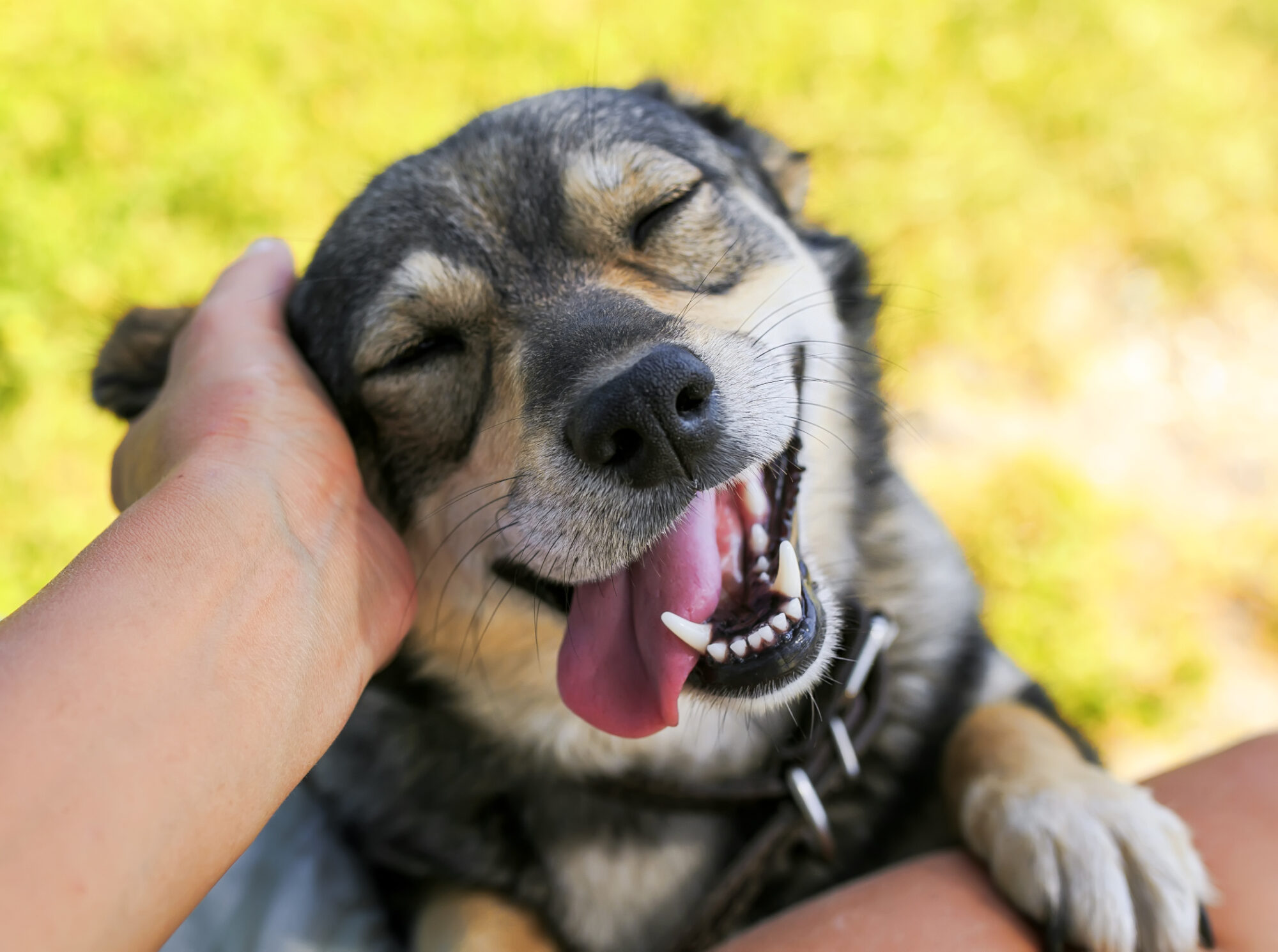
Fall in the San Lorenzo Valley brings many delights: golden leaves, warm weather (or rain!), wind, and of course, pumpkin spice everything. For pets with allergies, it can also mean the onset of intense itching and skin infections.
Contrary to popular belief, allergies in pets don’t occur only in the springtime. Fall allergies can also be a problem for your pet, caused by weeds that pollinate in the fall, namely, ragweed. Other weeds that pollinate in the fall include sagebrush, plantain, and lambs-quarters.
Pets with environmental allergies, known as atopic dermatitis, or atopy, can be allergic in one season, or may be allergic year-round. Allergens can include pollen, grasses, house-dust mites, and mold. The windy conditions we’ve seen in our area this late summer and fall have contributed to a particularly challenging allergy year for pets. And although rain can calm things down, ultimately allergic pets will be uncomfortable again when it dries out.
What an Allergic Pet Looks Like
Pet allergies can occur at any time in a pet’s life, but are most commonly discovered between 6 months and 6 years of age. Many people miss the onset of allergies in their pets, because allergies in pets don’t typically begin with sneezing or runny eyes, as they do in people. More commonly, pets scratch and lick or chew their skin, causing hair loss, sores, and secondary infections. Hot spots, caused by excessive scratching and licking a particular area, may result if a pet’s allergies are not treated. Hot spots are painful and may result in secondary infections that require treatment.
Inhaled allergens can cause problems from the inside, but allergens can also cause skin problems from the outside. Allergens often also settle on a pet’s coat and skin, and then trigger allergic reactions on the skin.
Another sign of fall allergies in pets is recurrent ear infections. Itchy ears and ear infections are often a result of environmental allergies, even with no other symptoms. As a result, many pet owners continue to treat the regular episodes of itchy ears, without realizing there is an underlying cause that could be addressed.
What You Can Do For Fall Pet Allergies
For owners struggling with an itchy pet, the good news is that plenty of options exist. Schedule an appointment with your veterinarian to assess the problem and ensure there is no secondary infection that needs treatment with antibiotics. Besides examining your pet and listening to their history, your veterinarian may recommend diagnostics to either rule out allergies or to determine the cause of the itching.
Diagnostics may include:
- Skin cytology (to check for bacteria and yeast)
- Cultures (to check for infection)
- Skin allergy testing
- Blood antibody testing
Depending on the type of allergy your pet has, your veterinarian might recommend oral antihistamines, topical treatments, fatty acids, steroids, prescription diets, or allergen specific immunotherapy (allergy shots). We are happy to announce that we have added additional allergy treatments to our arsenal. We’ve had great success in giving relief to pets with Apoquel, an oral medication, and in more severe cases with Cytopoint injections.
In addition to treatments offered in our office, you can make sure your pet is comfortable at home by:
- Making sure your pet is on flea preventive medication year- round
- Bathing your pet in a hypoallergenic shampoo and conditioner as recommended by your veterinarian
- Soaking your pet’s paws daily to ease inflammation and prevent allergens from being tracked into your home
- Removing your shoes before entering your home
- Adding an omega-3 fatty acid supplement to your pet’s diet (ask your veterinarian for more details)
- Vacuuming your home and laundering pet bedding weekly to prevent the buildup of allergic triggers
Allergies can be extremely uncomfortable for your pet, and detrimental to their overall health. If your pet is suffering from allergies, please give your team at Felton Veterinary Hospital a call so we can help.


 Schedule an Appointment
Schedule an Appointment
